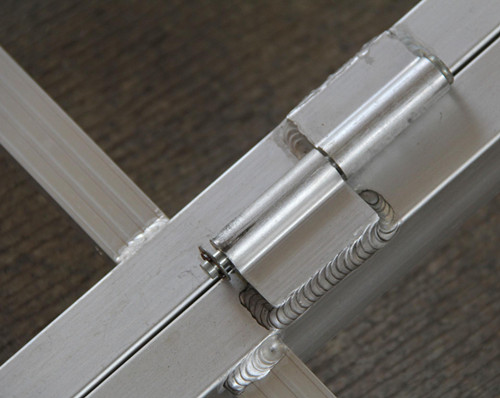Aluminum alloys are widely used in industrial products because of their excellent physical properties. However, due to improper selection of welding methods and welding process parameters, aluminum alloy parts are severely deformed due to stress concentration after welding, or because of welds. Holes, inclusions, incomplete penetration, and other defects, resulting in weld metal cracks or loose material, seriously affecting product quality and performance. Next Xiaobian introduced aluminum alloy welding methods and aluminum alloy welding precautions.

Aluminum alloy welding method
1. TIG welding
Tungsten argon arc welding is mainly used for aluminum alloys, which is a better welding method. However, tungsten argon arc welding equipment is more complex and is not suitable for operation under open air conditions.
2, resistance spot welding, seam welding
This welding method can be used to weld aluminum alloy sheets with a thickness of 5 mm or less. However, the equipment used in welding is relatively complicated, the welding current is large, and the productivity is high. It is particularly suitable for mass-produced parts and components.
3, pulse argon arc welding
Pulsed argon arc welding can improve the stability during the welding process. Parameters can be adjusted to control the arc power and weld forming. The weldment has small deformation and small heat-affected zone. It is especially suitable for thin plate, all-position welding and other occasions, as well as welding of forged aluminum, hard aluminum and super hard aluminum with high heat sensitivity.

Aluminum alloy welding precautions
1. Before the aluminum alloy is welded, the surface of the aluminum alloy must be cleaned to prevent the presence of oil, dust, etc. The surface of the aluminum alloy welding joint can be cleaned with acetone. The thick aluminum alloy is cleaned with a wire brush and then cleaned with acetone.
2. When the aluminum alloy is welded, it is necessary to clean the surface of the aluminum alloy first, and there must be no fumes, dust, etc. In addition, the thick aluminum alloy should be cleaned with a wire brush and then cleaned with acetone.
3, if the plate can be compared after the preheating of the plate, so as to prevent the preheating is not enough to cause the weld does not penetrate through, when the arc is closed with a small current arc fill pit.
4, welding must be standardized, according to the thickness of the plate to weld
5, welding torch cable should not be too long, if it is too long will cause wire feeding stability.
Editor's summary: About aluminum alloy welding methods and aluminum alloy welding precautions are introduced here, and hope to be helpful to everyone. If you want to know more about yourself, you can follow the information on this site.
Aluminum alloy aluminum alloy welding method
Zinc coating is a type of protective coating that is commonly used on metal surfaces to extend their durability and prevent them from corroding or rusting. It involves the application of a thin layer of zinc onto the surface of metal parts through a number of processes, the most common of which is hot-dip galvanizing.
The benefits of zinc coating are many. It offers excellent corrosion resistance, making it ideal for outdoor applications where metal parts are exposed to harsh weather conditions. Zinc coating also provides a smooth and uniform finish, which enhances the appearance of the metal and makes it more visually appealing. In addition to this, zinc coating improves the overall performance of the metal part by increasing its resistance to wear and tear.
Zinc coating is used in a variety of industries and applications, including construction, automotive, and manufacturing. In the construction industry, it is used to protect steel structures such as bridges, buildings, and pipelines from corrosion. In the automotive industry, it is used to protect metal components such as car frames, exhaust systems, and suspension parts. In the manufacturing industry, it can be used to protect machinery and equipment parts from rust and corrosion.
In conclusion, zinc coating is a highly effective and versatile technology for protecting metal parts from corrosion and rust. Whether for outdoor or indoor applications, it offers numerous benefits in terms of performance and durability. As such, it is an essential process for enhancing the longevity and reliability of metal parts across a range of industries and applications.
Zinc Plating,Cold Galvanizing Spray,Zinc Plated Steel,Zinc Nickel Plating
Lizhi Precision Manufacturing Technology Co.,Ltd , https://www.lzautoindust.com